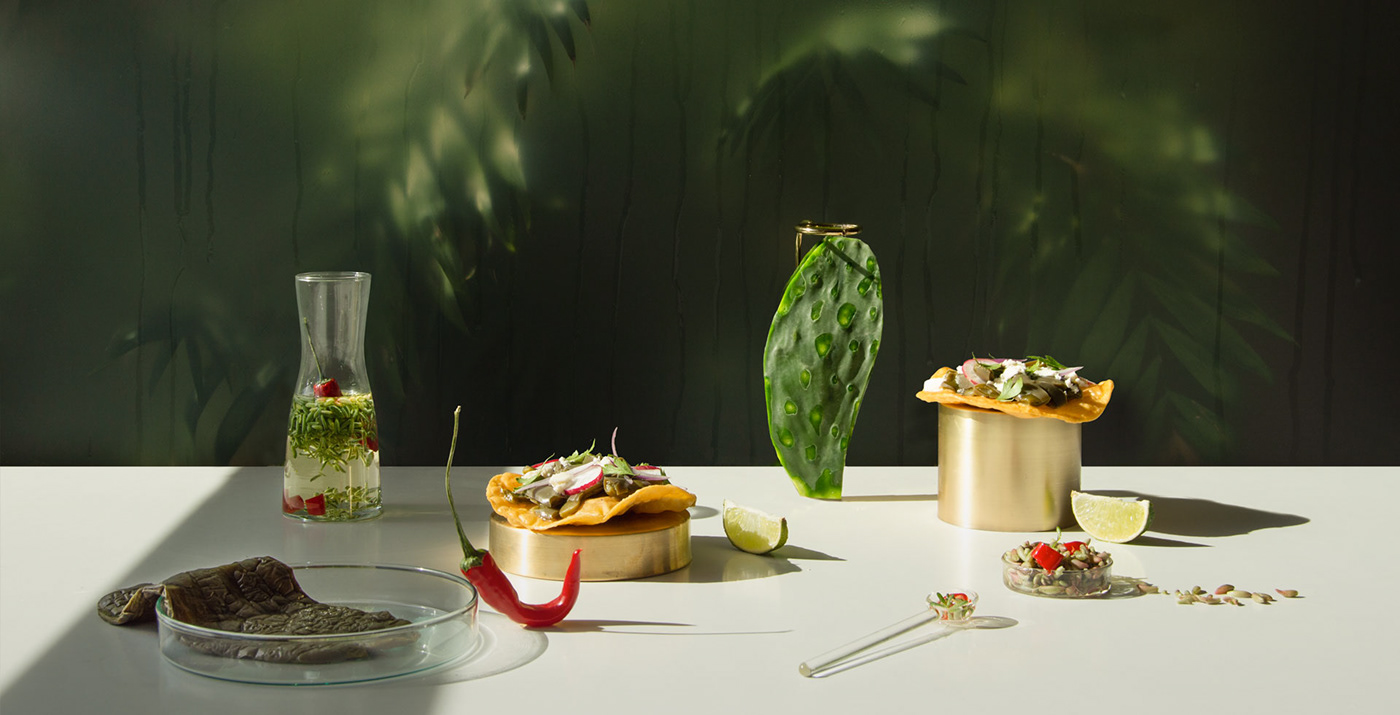
Unraveling the potential of succulents
Succulents are plants with parts that are thickened, fleshy, and engorged, usually to retain water in arid climates or dry soil conditions. They’re usually big, meaty plants: they’re resistant both to hot and sometimes cold weathers, they’re capable of storing huge amounts of water, and they reproduce themselves easily and at an incredible speed.


A wide skillset
Both their name and this skillset (especially their ability to retain water and survive in the harshest climates) is what made us think about the culinary potential of these plants. With climate change rapidly creating deserted areas and droughts even in the most unexpected areas of our planet, we may need to take a closer look at these amazing plants. With increasingly extreme weather patterns, studying these succulents may be a way to tackle some of the consequences of climate crisis.
“Their ability to retain water and survive in the harshest climates is what made us think about the culinary potential of these plants”
Some, like dragon fruit and aloe vera, are wildly known almost everywhere in the world. But others, like some varieties of sedum are only known by indigenous people, and in some cases all that knowledge is starting to disappear. Sedum sediforme, for example, was known in Spain as Uña de Gato (Cat’s nail) or Uva de Pastor (Shepherd’s grape) and it was consumed as an snack or preserved. Now it is only considered an undesired bad weed. So what if we looked back at these outstanding plants and tried to incorporate them into our daily lives? This research led us to a beautiful project where we’ve chosen some of the most common ones, studied them and then developed a series of speculative recipes.

“So what if we looked back at these outstanding plants and tried to incorporate them into our daily lives?”

Cacti are those thorny plants that everyone is familiar with. Cacti have developed a fleshy body (stem) where they store water and nutrients. Their leaves have become smaller and pointy to avoid both water loss and being eaten by animals. Here, we chose three of them: Opuntia ficus-indica (prickly pears), Hylocereus undatus (dragon fruit) and Echinocactus grusonii.

NOPAL TOSTADAS & BARREL CACTUS MOJITO
Opuntias are versatile plants from which we can eat both the “leaves” and the fruits. For this project, we’ve wanted to create our own version of the Mexican tostada, including Opuntia ficus-indica’s “meat” as well as onions, chillies and coriander. Some sedums have a cameo on this recipe too, acting as a spicy condiment.
Dragon fruit (pitahaya) is the fruit of Hylocereus undatus, an appreciated (and scarce) exotic sweet food that we’ve used to spice up this amazing pana cotta. Finally, Echinocactus grusonii are also edible: here we’ve juiced a small one to create an amazing cactus mojito for the hot summers ahead!


Aloe and agave
Aloes and agaves are plants from different families, but they share some of their features: big, blade-shaped leaves with spines that sprout out of the ground. They’re also easy to reproduce and they’re well known for their medicinal purposes, mainly in creams and beauty products, but also as food and drinks in different regions of the planet.


SUCCULENT JELLIES
In this project, aloe has been used to cook these sweet, succulent jellies with different flavours to enjoy at the end of this menu. Perhaps you may want to drink a tequila shot afterwards! Did you know that is a distilled spirit made from the agave plant?

The sedum family
Most sedums species are edible. They thrive in dry, rocky environments and are now considered bad weeds. They were consumed as a snack or preserved by Spanish and Mediterranean shepherds. And actually, the Sedum album used in this project was urban foraged from a clearing where it was wildly growing.

PICKLED SEDUMS
For this recipe, we’ve used four different species (Sedum album, Sedum Oreganum, Sedum Rupestre and Sedum Sediforme) to create three different pickled sedums: one with chillies, one with black pepper and another one with garlic and paprika.

Other succulents
Some other succulent plants are completely different: Salicornia europaea, known in Spain as “sea asparagus”, is an halophyte specie (tolerant to salt and sea water) widely known for its salty flavour and crunchy texture. Portulaca Oleracea (verdolaga in Spanish) is a plant native to India, Middle East and the Mediterranean countries, where it thrives and was used for its culinary and even medicinal properties. Finally, Umbilicus rupestris is a weed common mainly in the Mediterranean area, having a wide range of names in Spain, that thrives mainly in places with little to no soil, like walls and roofs.

SUCCULENT SALAD
Here, we’ve combined these succulents together to create a crunchy and refreshing salad. An interesting feature of the recipe is the salicornia infused olive oil, which is used to season the salad and give it a touch of marine salinity.









